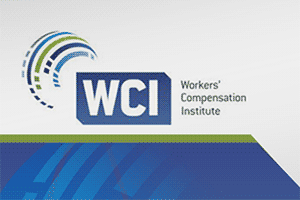
Because of its relevance at the intersection of workers' compensation, leave of absence and federal laws like the Americans with Disabilities Act (ADA) and The Family and Medical Leave Act (FMLA), the accommodation process requires a careful and thoughtful approach. Employers often offer light duty or transitional work programs for workers' compensation claims; however, many times, these options are inconsistently applied to employees on disability or leave of absence. Regardless of the nature of the injury, ADA regulations apply. To maintain compliance, there is a need for consistency among employers in their approach to accommodations and return to work across both occupational and non-occupational injuries and illnesses.
The interactive process
The process for determining if an employee has a disability and whether reasonable accommodations can be implemented is called the interactive process. Typically, this involves a dialogue between an employee and their supervisor, human resource representative or ADA coordinator, and takes into account the advice of healthcare providers. An employee can – but does not need to – request an accommodation to trigger the interactive process; the employer’s obligation begins whenever they become aware that an employee has a disability or suspects that a person may have a disability that is causing problems with work. Also, employees may be on a leave of absence – either occupational or non-occupational – and exhaust their entitlement. In these situations, the employer is obligated to begin the interactive process. Delaying or avoiding the interactive process places an employer at risk.
The steps
The Job Accommodation Network (JAN), is a service of the U.S. Department of Labor’s Office of Disability Employment Policy, available at www.askjan.org. It offers many valuable resources for employers as they navigate accommodations. As recommended in a JAN publication called “The Interactive Process,” follow these steps to support a compliant interactive process:
- Recognize an accommodation request or a duty to start the interactive process. Employees may request an accommodation or indicate they are having a problem performing work activities and that the problem is related to a medical condition.
- Gather information. Employers need to determine what information is needed to assess the employee’s situation. In some cases, no additional information is needed whereas, in others, it may be necessary for the employee to talk with a healthcare provider to determine the impairment and restrictions. Obtain a job description that outlines the tasks the employee is performing
- Explore what accommodations might be available to the employee and identify what environmental modifications could be made. Ask the employee what kind of accommodation would be helpful to complete job-related tasks.
- Choose the accommodation. If you have three or four options, JAN recommends asking the employee which option is preferred. There may be times when an accommodation is not reasonable for the employer to accommodate.
- Implement the accommodation. Ensure the selected option works as intended and offer assistance throughout implementation as needed.
- Monitor the accommodation. Check to ensure the accommodation is working. Also, recognize accommodations are not permanent. Business processes, existing technology and employee conditions change, and those may impact the effectiveness of the accommodation.
Accommodations and return to work will continue to be complex and challenging for even the most experienced risk and benefits professionals. As employers support colleagues with occupational and non-occupational injuries and illnesses, it is important to remain informed on current laws and proposed regulations while maintaining a thorough understanding of organizational policies and procedures. Collaborate with other professionals, break through silos, talk to experts, and use resources like www.askjan.org, www.dol.gov, and www.eeoc.gov. Consistency is key.
Join me, along with my fellow panelists, as we further explore this topic at WCI’s Annual Conference next week in our session “Return to work best practices.” If you have questions or are looking for additional accommodation support, leave us a comment or search our related resources on the blog.
Bryon Bass, SVP, Disability and Absence Practice and Compliance, Sedgwick